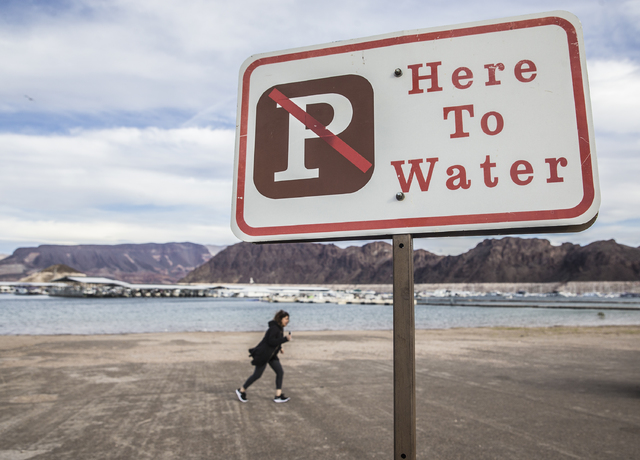Hopes for lake refill melt away
Spring arrived about two months early at the headwaters of the Colorado River, prompting rapid snow melt and another ugly change in the federal water supply forecast for the region.
Forecasters now predict barely half of an average year's flow for the river system that fills Lake Mead and supplies most of Las Vegas' drinking water.
"We're going to have a miserable water year because a lot of the snow is already gone," said Tom Ryan, a hydrologist for the Bureau of Reclamation's upper Colorado River Basin office in Salt Lake City. "These dry, warm spring conditions are killers for water supplies."
The water projection for the river basically has been cut in half as a result of an unusually hot and dry March in the Rocky Mountains.
March is normally marked by new accumulations of heavy, wet snow in the mountains of Colorado, Utah and Wyoming. This year, the snow never came, and what had built up quickly disappeared in the warm air.
"This was not a slow melt-off," said federal snowpack expert Randy Julander. "This was full panic retreat. It got ugly fast."
The river's diminishing forecast poses no immediate threat to the local water supply, but it is likely to accelerate Lake Mead's decline.
In early March, the U.S. Bureau of Reclamation was predicting that by September 2008 the lake could see its water level fall below 1,100 feet above sea level for the first time since 1965.
New bureau projections set for release in the next few days could be revised downward as a result of the latest snowpack numbers.
Federal water supply forecaster Tom Pagano said that in the San Juan Mountains of southwestern Colorado, "streams started to run in March, which you almost never see."
In some parts of Utah that drain into the Colorado River, the conditions on April 1 were "the worst that we've seen in 70 years, since we've been measuring things," said Pagano, who works at the U.S. Department of Agriculture's Water and Climate Center in Portland, Ore.
Julander said he already has seen plants sprouting in Utah's high country that normally don't show themselves until May. "Places that usually have four to five feet of snow have none," he said.
The same kind of rapid melting occurred in 2004.
"That was such an extreme event that some of us thought we'd never see it again in our careers," Pagano said. "Well, here we are again. It's worrying, that's for sure."
"It just sends little shock waves through the whole water management community," said Julander, who supervises the Agriculture Department's snow survey program in Nevada, Utah and California.
The latest downturn in the forecast comes as the Bureau of Reclamation holds public hearings on new guidelines for sharing shortages and operating Lake Mead and Lake Powell during prolonged drought.
If the current trend continues, those guidelines will have to be put to work "before the ink has dried," said Pat Mulroy, general manager for the Southern Nevada Water Authority.
"It drives us closer to having a shortage declared," she said. "This is an ugly drought. That's what we've been saying all along."
Nevada and the six other states that share the Colorado River have already agreed to the new shortage guidelines. Interior Secretary Dirk Kempthorne is expected to sign off on them late this year or early next year.
Mulroy said the bleak outlook for the Colorado poses no short-term threat to Southern Nevada's water supply. If necessary, the authority can draw more water from Lake Mead through a purchase agreement with Arizona. The authority also could tap additional water it has banked beneath the Las Vegas Valley.
But if the river fails to recover and Lake Mead continues to shrink, it could force the authority to accelerate work on a so-called "third straw" that would draw water from the deepest part of the lake.
"We've got to get that third intake in as soon as we can," Mulroy said.
The $650 million project is slated for completion by the end of 2011.
The two existing intakes provide the Las Vegas Valley with 90 percent of its drinking water supply, but one or both of the inlet pipes could be forced to shut down if the lake level falls another 80 feet.
During the past eight years of record drought, the Colorado River has received just 55 percent of its average flow of water.
Several straight years of above-average snowfall and water runoff in the Rockies are needed to refill Lake Mead and Lake Powell, the river's two main reservoirs.

















